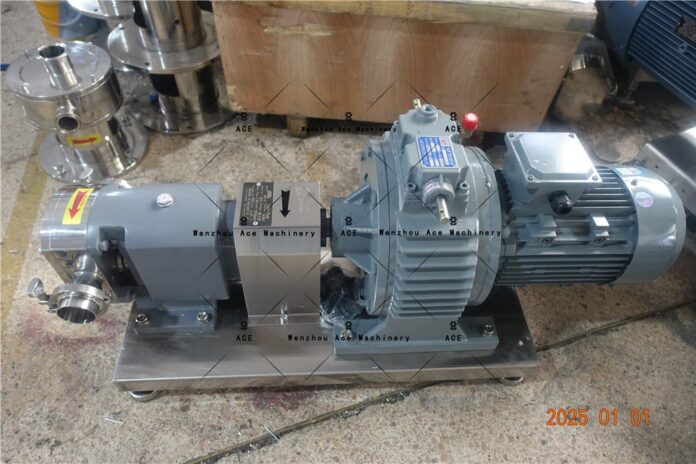In the realm of industrial fluid transfer, the lobe pump has established itself as a dependable and versatile solution for a multitude of demanding applications. Its ability to efficiently handle high-viscosity fluids, solids, and sensitive products makes it a popular choice in sectors such as food processing, pharmaceuticals, chemicals, and cosmetics. For those interested in exploring high-quality and innovative lobe pump options, provides comprehensive information on various models and their capabilities.
What Makes a Lobe Pump Unique?
The lobe pump is a type of rotary positive displacement pump characterized by its rotating lobed impellers that work in synchronization to move fluids. These lobes are typically shaped to maximize the capture and transport of liquids through a sealed cavity inside the pump casing. As the lobes rotate, they create a series of sealed chambers that carry the fluid from the intake to the discharge. One of the distinctive aspects of a lobe pump is its ability to handle fluids that are viscous, contain particulates, or are shear-sensitive. Its design ensures minimal turbulence and shear during operation, which preserves the quality and integrity of delicate or composite materials. The lobes are often made of durable, corrosion-resistant materials, allowing the pump to operate reliably in harsh environments.
How the Lobe Pump Works
The operation of a lobe pump is straightforward yet highly effective. As the lobed rotors turn within the casing, they trap specific volumes of fluid in the interlobular space. The synchronized rotation of the lobes prevents contact, reducing wear and tear, while ensuring a continuous flow of the product. With each rotation, the trapped fluid is moved from the inlet side to the outlet, creating a steady and predictable flow. This process is especially advantageous in processes where consistent dosing and controlled transfer are critical. Additionally, the pump can be designed with clean-in-place (CIP) features, facilitating quick sanitation, which is vital in food, beverage, and pharmaceutical industries.
Advantages of Using a Lobe Pump
Employing a lobe pump offers numerous benefits that make it an essential component in various industrial processes. Its capacity to handle high-viscosity fluids and those containing solids is unmatched in certain applications, reducing the need for secondary pumping equipment. The pump’s gentle fluid handling minimizes damage to sensitive components, making it ideal for biological and pharmaceutical products. Because it operates with minimal pulsation and shear, it ensures that product quality and consistency are maintained throughout the transfer process. The modular design of lobe pumps allows for easy maintenance, cleaning, and part replacement, which minimizes downtime and operational costs. Furthermore, the ability to customize materials—such as stainless steel, elastomers, or specialized alloys—enables the pump to be suitable for corrosive, sterile, or abrasive environments.
Diverse Applications of Lobe Pumps
The versatility of a lobe pump makes it applicable across numerous industries. In the food sector, it is used to transfer liquid products like milk, yogurt, sauces, and fruit pulps without compromising texture or flavor. The pharmaceutical industry relies on it for transferring sterile liquids, biological cultures, and powders that require contamination-free handling. Chemical manufacturers utilize lobe pumps for transporting corrosive or viscous chemicals, ensuring safe and efficient processing. In wastewater treatment, they are employed to move sludge, grit, and other abrasive materials, thanks to their robustness and ease of maintenance. Their adaptability and hygienic design enable them to excel in demanding environments where reliability and cleanliness are paramount.
Optimizing Pump Selection
Choosing the right lobe pump involves evaluating specific operational factors including flow rate, pressure, fluid properties, and hygiene standards. Factors like seal type, material construction, and ease of disassembly should also be considered for maintenance and sanitation purposes. Access to a wide range of sizes and configurations allows industries to select a pump that precisely fits their needs. Partnering with knowledgeable suppliers, such as those listed at can help optimize the selection process and ensure the implementation of the most effective pumping solution.
Conclusion
The lobe pump’s unique combination of efficiency, durability, and gentle handling makes it indispensable for modern industrial processes. Its ability to transfer complex, viscous, and sensitive fluids reliably has earned it widespread application across diverse sectors. Understanding the pump’s working principles, key benefits, and suitable applications empowers companies to enhance their operational efficiency and product quality. For customized solutions and high-performance models, exploring reputable sources like provides access to innovative and adaptable pumping technologies designed to meet specific industry requirements. Embracing the capabilities of a lobe pump can significantly improve fluid handling workflows, productivity, and overall process integrity.


